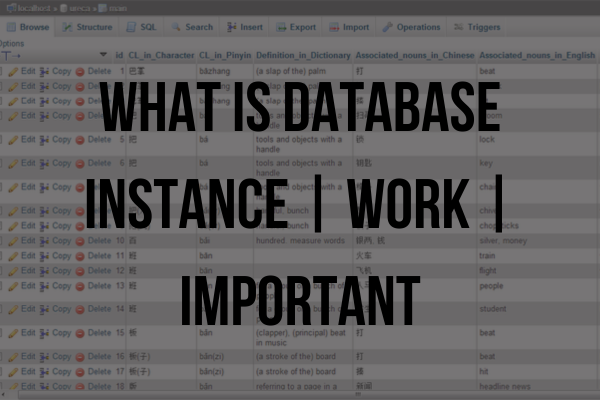As businesses grow and their data needs become more complex, it becomes essential to manage data in a more organized and scalable way. This is where database instances come in. In this article, we’ll dive deep into what database instances are, how they work, and why they are crucial for businesses of all sizes.
What is a Database Instance?
A database instance is a single, isolated copy of a database that runs on a server. It’s essentially a virtual representation of a database, which includes all the data, processes, and resources required to operate it. In simpler terms, a database instance is a running version of a database on a server that can be accessed and utilized by different applications.
How do Database Instances Work?
Each database instance operates independently of others and is allocated a specific amount of resources, such as memory, disk space, and CPU. It’s important to note that multiple instances of the same database can run on the same server, each with their unique set of resources. This allows multiple applications to access and utilize the same database, without interfering with each other’s operations.
Each database instance includes several components, including the following:
Data Files
Data files are the physical files that store the data in a database instance. These files can include tables, indexes, and other database objects.
Log Files
Log files contain records of all the transactions that take place in the database instance. These files are essential for ensuring the consistency and integrity of the data.
Control Files
Control files contain critical information about the database instance, such as the database name, data file locations, and the state of the database instance.
Memory Structures
Memory structures include the cache and buffer pools, which store frequently accessed data and improve the performance of the database instance.
Why are Database Instances Important?
Database instances are essential for businesses that require a scalable and organized way to manage their data. Here are some of the key benefits of using database instances:
Scalability
Database instances can be scaled up or down, depending on the changing needs of the business. As the data grows, additional instances can be added to handle the increased load.
Isolation
Each database instance runs independently of others, providing complete isolation and security. This ensures that data from one instance cannot be accessed by another, enhancing security and reducing the risk of data breaches.
Performance
Database instances can be optimized for specific applications, improving the performance of the database. Additionally, the use of memory structures like cache and buffer pools can further improve the performance of the database instance.
Flexibility
Multiple applications can access the same database instance, allowing for greater flexibility and ease of use. This is particularly useful for businesses that have multiple applications that need to access the same data.
High Availability
Database instances can be replicated across multiple servers, ensuring high availability and reducing the risk of downtime. This is achieved through the use of replication techniques like clustering and mirroring.
Conclusion
Database instances are a crucial component of modern data management, providing businesses with a scalable and secure way to manage their data. With the ability to isolate data, improve performance, and ensure high availability, database instances are essential for businesses of all sizes. By understanding the importance of database instances and how they work, businesses can make informed decisions about their data management strategy and ensure their data is secure, organized, and readily accessible.





Leave a Reply